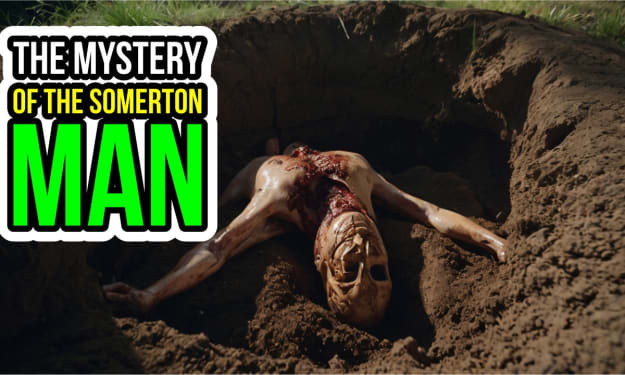
I was recently doing some background research into the ironically named “Redemption Era” in the United States when all the rights won by African-Americans in the post-Civil War Reconstruction Era were systematically stripped away. I was rather distressed to see the language of the Church..”Redemption”... used to describe something so truly alien to anyone’s concept of compassion or God’s Kingdom.
I learned that, prior to the Jim Crow Era, lynching was a form of frontier justice performed by various races (including whites upon whites and even blacks upon blacks) but later transformed into almost exclusively white violence against blacks. I poured over grisly photographs of burnt and swollen black bodies strung up on trees while proud, white faces in the crowd gazing upon the victims, and the first line of Bob Dylan’s “Desolation Row” kept reverberating in my head....
“They’re selling postcards of the hanging, …..” That sentiment captured the perverse crowd mentality that seldom listens to the voice of reason or morality.
Dylan was reportedly commenting on the 1920 lynching of three men that occurred in Duluth, Minnesota, two blocks from the home of his then eight-year-old father, Abram Zimmerman. Yet, I wish to tell you about a lynching that occurred ten years later in Marion, Indiana...a lynching from which one young African-American man seemingly miraculously escaped ..all due to a mysterious female voice that spoke to the crowd.
James Cameron was the name of the young man in question. A slightly built sixteen-year-old African American boy in 1930, James had been playing horseshoes one August evening with his school friend, eighteen-year-old Tommy Shipp, and nineteen-year-old Abe Smith when the three black youths decided to go for a ride in Tommy’s car. Abe suggested they rob someone to get money for a new car, so they drove to Lover’s Lane. James protested, but Abe handed him a .38 caliber pistol and told him to tell the couple inside a nearby parked car to get out and put their hands in the air.

However, James immediately recognized the white man as Claude Deeter, a frequent customer at his shoeshine stands and a friend. (Claude was twenty-five, the oldest son of a devout Quaker family. He always tipped James, treated him well, and engaged in conversation with him.) James also noted the frightened look on the face of Claude’s date, Mary Ball, and handed the gun back to his companions, saying he wanted nothing to do with them before running several miles home. James heard gunshots during his flight but kept running.
When he reached his home, his mother noticed his perspiration and the anxious look on his face and asked him if he was in trouble, but he would not admit anything to her and went to bed. Shortly afterward the police arrived with guns drawn and arrested James. Tommy and Abe were already in separate cells at the Grant County Jail when James was interrogated for three hours, punched and kicked, and coerced to sign a confession. Then James was locked in a cell with thirty other black men charged with hopping freight trains.

Claude had been shot and left mortally wounded, and by morning false rumors were circulating that Mary had been raped. An angry crowd started to gather outside the jail, and James prayed his first prayer for a white man: James asked for Claude to live to tell of his innocence. Sadly, Claude died by midday, and his bloody shirt was hung outside the police station, inflaming the anger of the mob. James pleaded with a reporter to ask Mary to confirm his innocence, but no one listened. James saw numerous people who came to view him like a zoo exhibit, but his mother reportedly tried to visit with him numerous times but was not permitted.
By twilight, the crowd was armed with firearms, crowbars, and clubs and began throwing stones at the windows of the jail, demanding the three young black prisoners be brought out. When splashing the brick walls with gasoline and trying to light them on fire did not work, the mob pounded down the door of the jail with a sledgehammer. (Some report that the police used tear gas to try to disperse the crowd, but James was informed that jail keys were thrown out to the mob.) From the upstairs window James saw police officers laughing along with the crowd, and then he heard Sheriff Jacob Campbell (a Klu Klux Klan member like many in the crowd) instruct his officers not to shoot into the crowd on account of the women and children.

The crowd dragged Tommy out first, clubbing and stoning him. A woman was seen jumping off a car and ripping the skin off Tommy’s back with her high heels. Then Tommy was hung off the bars of a cell window in the back of the jail where James could not see him from his cell window. Tommy was dead long before he was strung up from the maple tree in front of the courthouse. His pants had been torn off for souvenirs and replaced with a KKK robe.
Abe was taken out next. They hung him from the maple tree, and he pulled at the rope with his hands to prevent suffocation, so the crowd took him back down and broke his arms before stringing him back up. Someone thrust a crowbar into his Abe’s chest to make sure he was dead. Then people began posing with the dead young men, and a photographer named Lawrence Beitler snapped a photo of the entire spectacle from which he made thousands of copies over the next 10 days. (In fact, the photo inspired Abel Meeropol, a Jewish School teacher in NYC to write the poem “Bitter Fruit” in 1937, later set to music, renamed “Strange Fruit” and popularized by Billie Holiday.)
The carnival atmosphere led to the mob, estimated at 5,000 strong, to chant, “We want Cameron! We want Cameron!” They came upstairs to the cell, but the sheriff said there were only boys in the cell and suggested that they had satiated their vengeance on the two older teenagers. However, the mob was not satisfied and came back to the upstairs cell, threatening to lynch all the black men held within. The Southern blacks charged with train hopping also claimed Cameron was not present and began to beg for their lives on hands and knees, much to the delight of the mob leaders. Finally, an older black prisoner pointed James out, and the mob dragged him outside and began abusing him. Children bit his legs while others spat at him and struck him with stones, pick axes, crowbars. James said he felt ice cold, as if in a rubber suit, and a rope was placed around his neck. He recognized faces in the crowd and searched in vain for a merciful one.
James remembered his mother telling him to pray for mercy and forgiveness of sins, so he did just that, feeling relieved to leave this life filled with deceitful and false people. According to James, a voice from Heaven suddenly spoke out, saying that this boy was innocent of murder and rape, and instructing the crowd to leave him alone. James said that the noisy, rowdy crowd suddenly grew quiet and all the hands that were hurting him suddenly became gentle, removing the noose and allowing him to stumble back to the jail. He described his experience as a photo negative in which he could no longer tell the black faces from the white ones.

James was instructed to get into a nearby car and lay on the floor while officers drove him away, still mocking and mistreating him. The next day the young prisoner was sent to the state reformatory at Pendleton and eventually to a jail in Anderson where Sheriff Bernard Bradley (a Catholic man at odds with the KKK) protected James from continuing threats of lynching and treated him as a son.
Meanwhile, back in Marion, Claude Deeter’s grieving father visited the families of the accused and offered forgiveness and support. The Deeter family clearly embraced their Quaker faith.
The leaders of the violent mob were never charged with anything, and the police department's actions were deemed prudent. However, in 1931, James was convicted as an accessory before the fact of murder. (Mary Ball later testified that she had not been raped.) He served four years in prison before he was paroled and went on to live the life of an activist, including founding three chapters of the National Association for the Advancement of Colored People and serving as the Indiana State Director of Civil Liberties from 1942-1950. He did historical research about lynching and collected artifacts, opening the Black Holocaust Museum in 1988. A devout Catholic, he married Virginia Hamilton in 1938 and fathered five children with her. The couple had been married for 68 years when James Cameron died in 2006 at the age of 92.
Before James’s passing, William Deeter (Claude’s brother) arranged to meet with him for reconciliation through William’s minister, so the two elderly men spent time together and prayed.
James said that he had asked others at the scene of the lynching if they heard the voice telling of his innocence, and they had not. Some suggest a crowd member stood on a car and made that statement, some say an NAACP member, others mention several white boys, even Mary Ball’s uncle has been suggested. A local football hero, Frank Faunce, was credited with removing the noose from Cameron’s neck, saying he deserved a fair trial, and escorting him back to jail. Yet, James believed the voice was other-worldly, God’s answer to his desperate prayer.
To me, whether you believe that James heard a disembodied voice from Heaven or some earthly person summoned the courage to speak up, there still is a miraculous element at work here. The veil is pulled back just a bit to reveal a conspiracy of mercy and healing at work through a young boy’s desperate plea, a Quaker family’s prayerful actions, and a Catholic sheriff’s commitment to protect...giving that boy hope and thereby transforming his hard work and determination into a mighty force for justice.
NOTE: James Cameron mortgaged his house in 1982 to self-publish “A Time of Terror: A Survivor’s Story”
I gleaned the content of this article from Wikipedia and several online articles as well as a number of YouTube videos (including “The Third Man” and “Sweet Messenger”) and Cynthia Carr’s book “Our Town: A Heartland Lynching, A Haunted Town, and the Hidden History of White America.
About the Creator
Julia Schulz
I enjoy crafting poetry and telling stories. I especially love being in the "zone" when I take a deep dive with my subject matter, developing characters and settings and researching topics like history and sustainable living.
Enjoyed the story? Support the Creator.
Subscribe for free to receive all their stories in your feed. You could also pledge your support or give them a one-off tip, letting them know you appreciate their work.






Comments
There are no comments for this story
Be the first to respond and start the conversation.